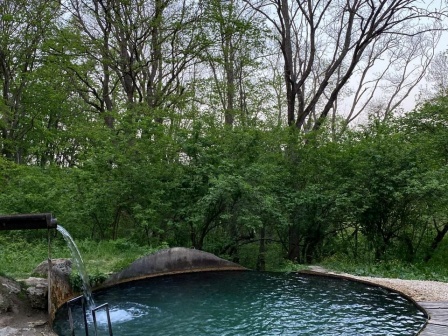Resource base
Climate
- The average annual precipitation is 628 millimeters
- The prevailing winds throughout the year are southwest winds
- From May to September, the weather conditions are considered comfortable
- The climate is suitable for winemaking and agriculture
Mineral
resources
Fresh water
reserves
Fertile
lands
Recreational resources
- Shugo Volcano is a remarkable natural landmark located 5 km southeast of Varenikovskaya village in the Krymsk District, 43 km from Anapa. It stands as the highest point of the Dzhiginsko-Varenikovskaya ridge, reaching 163 meters above sea level. This ridge is the eastern extension of the Taman Uplands, spanning 25 km and featuring four volcanoes. The volcanoТs crater forms a large bowl, with the bottom sitting 4Ц6 meters lower than the upper edges of the crater rim. The bowl has a diameter of about 450 meters.
- Based on comprehensive physical and chemical studies, the mud of Shugo has been discovered to be effective in treating a wide range of disorders. This dark gray mud with a bluish hue is saline and oily, rich in iodine and bromine. Residents of the region think that Shugo mud has healing effects.
- In the Varenikovsky rural settlement of Krymsk District, within Shkolny farm, there is a natural water source called Shchelokov spring. The area surrounding the spring is being looked after, there is a fountain nearby. Shchelokov spring is a popular spot not only for the local residents but also for people from other parts of the region, who come there every year to celebrate a traditional Christian holiday, Epiphany.
Shugo Mud-volcano
Shugo Volcano is a remarkable natural landmark located 5 km southeast of Varenikovskaya village in the Krymsk District, 43 km from Anapa. It stands as the highest point of the Dzhiginsko-Varenikovskaya ridge, reaching 163 meters above sea level. This ridge is the eastern extension of the Taman Uplands, spanning 25 km and featuring four volcanoes. The volcanoТs crater forms a large bowl, with the bottom sitting 4Ц6 meters lower than the upper edges of the crater rim. The diameter of the bowl is about 450 m.
Based on comprehensive physical and chemical studies, the mud of Shugo has been discovered to be effective in treating a wide range of disorders. This dark gray mud with a bluish hue is saline and oily, rich in iodine and bromine. Residents of the region think that Shugo mud has healing effects.

Shchelokov water spring
In the Varenikovsky rural settlement of Krymsk District, within Shkolny farm, there is a natural water source called Shchelokov spring.
The area surrounding the spring is being looked after, there is a fountain nearby. Shchelokov spring is a popular spot not only for the local residents but also for people from other parts of the region, who come there every year to celebrate a traditional Christian holiday, Epiphany.
Krymsk Local History Museum
The Krymsk Local History Museum was founded in 1964 by the Krymsk City Executive Committee on January 16, 1964. Located in one of the cityТs oldest buildings, built in the late 19th century, the museum was originally a Greek school. It has a significant number of historical documents illustrating the cityТs history across different events, providing insights into the nationТs past. The museum particularly emphasized research activities and gathering materials linked to the period of the Great Patriotic War (1941Ц1945).
A specific area of the museum focuses on the events of the Great Patriotic War. The central part of the Blue Line, which served as the enemyТs defensive line and was the last and most important fortification of the Nazis in the Caucasus, was located in Krymsk District.



